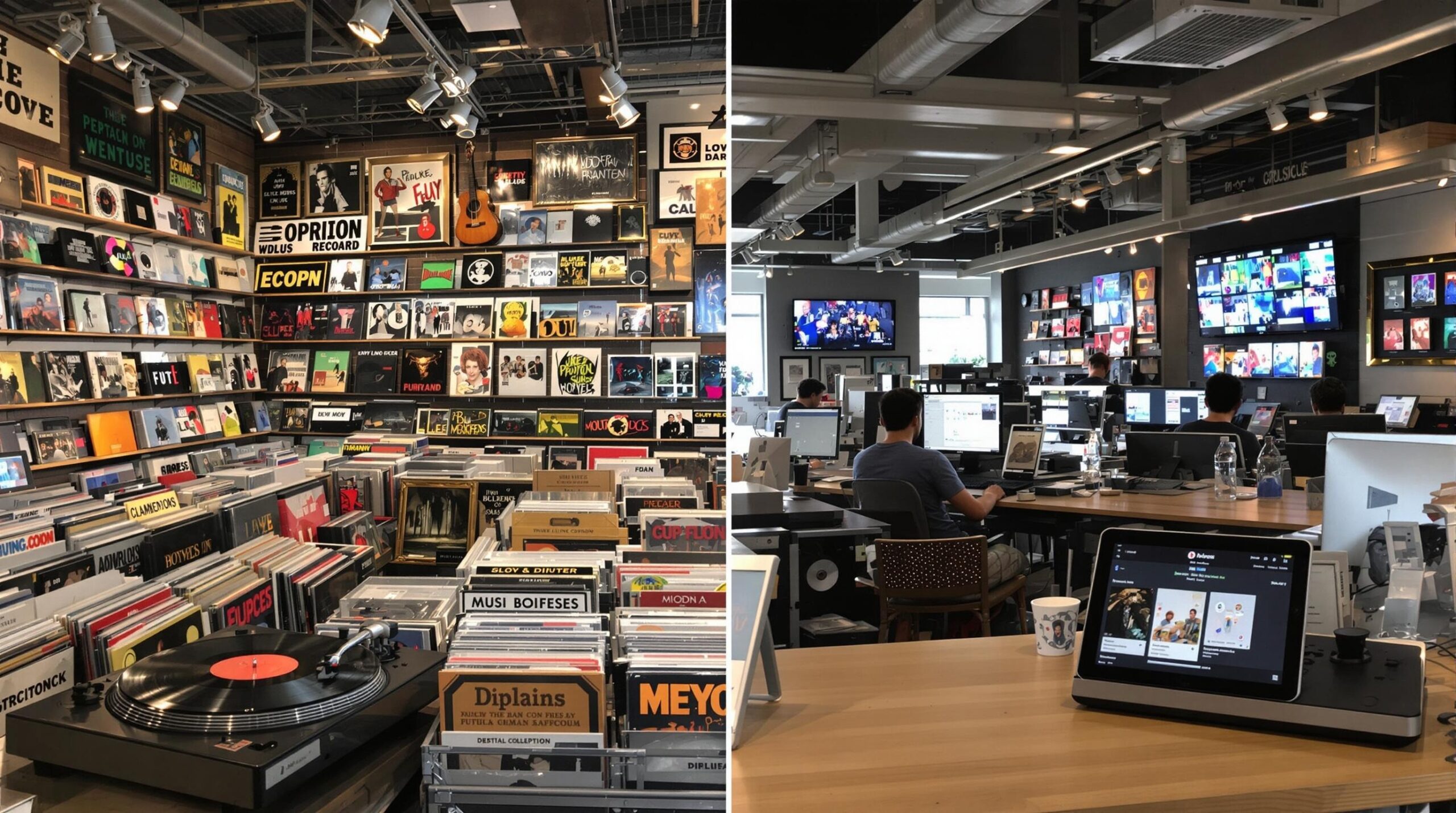The music industry has undergone transformative changes over the past two decades. With technological advancements, the industry has seen shifts in music consumption. Music streaming services have emerged as the primary way people listen to music. The rise of platforms like Spotify, Apple Music, and Amazon Music has profoundly affected traditional record labels. This article explores how music streaming has reshaped the record industry, examining the challenges and opportunities created by this new landscape.
The Rise of Music Streaming Platforms
In the early 2000s, music lovers primarily bought physical CDs or downloaded songs from online retailers. Streaming services started gaining traction in the late 2000s and early 2010s. Spotify, launched in 2008, pioneered a new way for consumers to access music. These platforms offer vast libraries of songs for a monthly subscription fee. This model provides consumers unlimited access to music at their fingertips. Music streaming has since outpaced physical and digital sales, becoming the dominant force in the music market.
Impact on Traditional Record Sales
Music streaming has revolutionized how music is distributed and consumed. Record sales have seen a significant decline as a result. Physical album sales have dropped rapidly, with many retailers reducing their CD sections. The ease of access to millions of songs at a low cost attracts music consumers to streaming services. Downloads have also declined as users opt for the convenience of on-demand music libraries. This shift has led to a substantial dip in revenue from traditional sales channels.
Revenue Streams and the Challenge of Monetization
Music streaming affects revenue distribution in the music industry. Record labels face challenges in monetizing streaming effectively. While streaming generates significant revenue overall, it is distributed differently than traditional sales. Streaming revenue is shared among artists, songwriters, and rights holders based on complex licensing agreements. This model means record labels earn less per stream than per album sold. This shift has forced labels to rethink their income-generating strategies in the streaming era.
Adapting to a New Business Model
Traditional record labels have had to adapt their business models to survive. Some have embraced streaming as a new opportunity. Many labels now focus on signing artists who have built solid online followings. This shift reflects a growing recognition of the influence of social media and digital presence. Furthermore, labels are leveraging data analytics provided by streaming platforms. This data provides insights into listener behavior and preferences, helping labels tailor marketing and distribution strategies.
Opportunities for New Artists
Music streaming offers budding artists unprecedented opportunities. Traditionally, artists needed a record deal for distribution and widespread exposure. Streaming platforms have democratized the process of reaching audiences. Artists can now independently upload music and reach global listeners without label support. This accessibility has empowered diverse voices in the music industry. Consequently, independent artists have wider avenues to build their careers while retaining more creative control and revenue.
Transformation of Artist-Record Label Relationships
The advent of streaming has significantly influenced artist-label relationships. Traditional labels often held considerable power over artists’ careers. With streaming, artists have more options for exposure and distribution. As a result, they have gained greater leverage in negotiations with labels. Modern deals often reflect a partnership model where artists retain more rights and receive better revenue splits. This shift encourages labels to offer more equitable terms to attract and retain talent.
Challenges of Discoverability and Competition
With over 100,000 new tracks uploaded daily, discoverability is a significant challenge for artists. While streaming platforms provide access to global audiences, competition is fierce. Many talented artists struggle to stand out due to the volume of available content. As a result, labels and artists utilize playlist placements and algorithm-driven recommendations. These tools help increase visibility and effectively reach potential fans.
Subscription Models and User Engagement
Subscription models are key to the growth of streaming platforms. These services offer both free ad-supported and premium tiers. High user engagement and subscriber retention are critical to streaming services’ success. Labels benefit from platforms with large user bases because such platforms offer greater exposure for artists. User data collected by these platforms guides marketing efforts and informs strategic decisions. This synergy creates a beneficial ecosystem for streaming services and record labels.
Live Music and Concert Innovations
The popularity of music streaming has also influenced live music and concert experiences. With streaming democratizing access to music, concert demand has increased internationally. Artists and labels have increasingly turned to live performances for revenue. The live music industry often adapts through online platforms to reach more audiences. Virtual concerts and live streams have emerged as new revenue sources, especially during the COVID-19 pandemic. As a result, artists reach global audiences who cannot attend physical events.
The Future of Music Streaming and Record Labels
The future of music streaming and record labels will continue evolving. Innovation and adaptability will shape industry dynamics. Streaming services may incorporate more social features to enhance user interaction and engagement. Advanced technology, like artificial intelligence, will likely offer new tools for promotion and discovery. Labels will focus on building diverse music catalogs and supporting genre innovation. Collaboration between streaming platforms and record labels will likely strengthen, providing mutual benefits.
Conclusion
Music streaming has undeniably changed the landscape of the music industry. It presents both challenges and opportunities for traditional record labels. These labels must adapt to stay relevant in a rapidly shifting environment. They must embrace new technologies, business models, and partnerships. Artists, empowered by streaming platforms, have redefined their relationships with labels. This shift has fostered a more equitable music industry landscape. As the industry continues to innovate, the interplay between streaming services and record labels will shape the future of music consumption. In this ever-evolving musical ecosystem, adaptation remains key to success.


